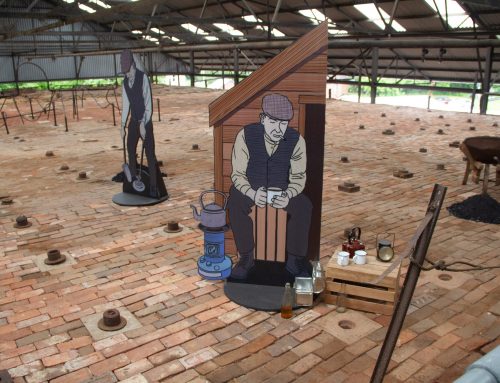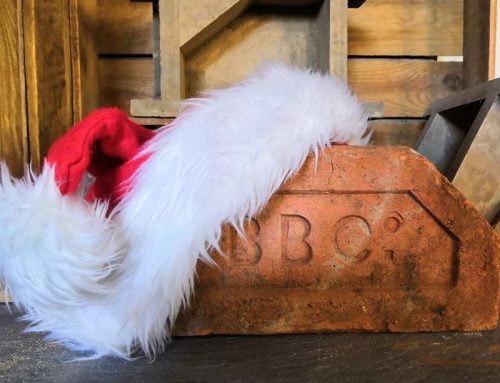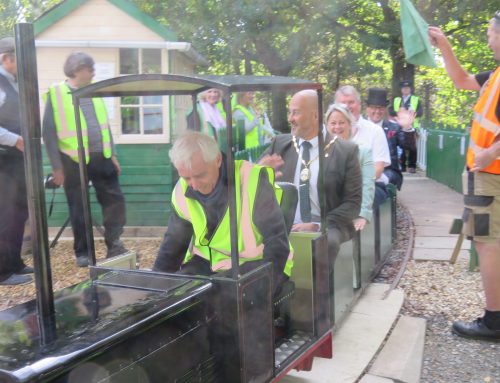 The museum has one of the few remaining Staffordshire Kilns left in the country. It is more properly known as a Staffordshire Transverse-arched Continuous Kiln and was built with twelve separate chambers set in two rows of six, back-to-back. Built of brick, each chamber was constructed with a barrel-vaulted ceiling. The use of arches as the main construction meant that they didn’t have to use mortar to hold the bricks in place. Arches are inherently strong once the last, or key, brick is in place.
The museum has one of the few remaining Staffordshire Kilns left in the country. It is more properly known as a Staffordshire Transverse-arched Continuous Kiln and was built with twelve separate chambers set in two rows of six, back-to-back. Built of brick, each chamber was constructed with a barrel-vaulted ceiling. The use of arches as the main construction meant that they didn’t have to use mortar to hold the bricks in place. Arches are inherently strong once the last, or key, brick is in place.
Continuous kilns were economic to run. Unlike intermittent kilns they never went out and the heat from the chambers that were actively firing was used to pre-heat the chambers waiting to be fired. Fuel was dropped in from the fuelling floor above a little at a time every fifteen minutes or so. There were three chambers being fired at any one time and the fire was rotated round the whole kiln on a day-by-day basis. It took roughly 14 days to complete a whole cycle. Once a burning chamber had reached the right temperature it was then allowed to go out. A slow process of cooling followed, bringing cold air in from a chamber that was being emptied. Running these kilns was a very skilled job.
The kiln at Bursledon originally had a brick structure on top with a double pitched roof over the fuelling floor. This would have made the environment the kiln workers operated in very hostile as each time you opened up the fuelling holes the hot gases would have rushed out only to be breathed in by the lungful. In the 1960s the pitched roofs were removed and a big open-sided pitched roof was put in its place. Unfortunately, the roof covering that was used included a small amount of asbestos. It was a cheap and popular roofing material at that time.

Sixty years later the roof sheets were starting to break down threatening to contaminate the fuelling floor below. The museum has spent many years trying to find a way of resolving the issue and have at last been successful. Liaising with Historic England we were advised to have the kiln put on the At Risk Register. The work has been generously funded by Historic England, the Garfield Weston Foundation and Hampshire County Council.
The work has begun and will be completed by the end of March, weather permitting. As it is part of the Grade II* listed curtilage the new roofing material will look very like the original fibre cement – just a different, less dangerous fibre. We are also going to be improving the drainage from the roof in order to control the water that is currently pouring onto the main courtyard. The new roof should be good for a further 30 years or so and help to preserve the kiln into the future.
Carolyne Haynes











FOLLOW US